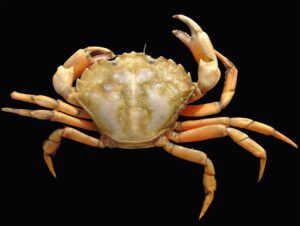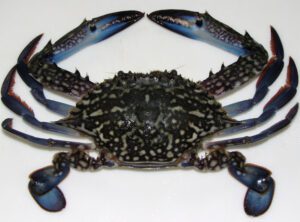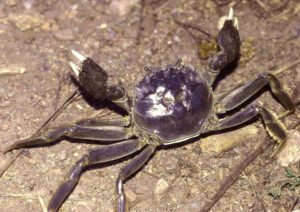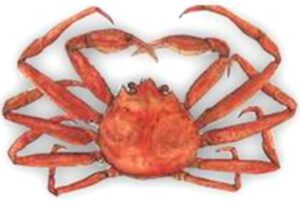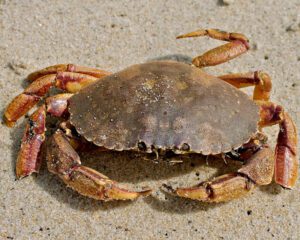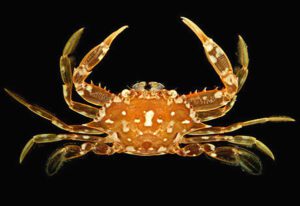The Spider crab is a species of migratory crab which is found in the north-east Atlantic and the Mediterranean Sea. It is also known by many other different names such as Common Spider crab, European Spider crab, Spiny Spider crab, Maja Squinado, Spinous Spider crab etc. It is without doubt, one of the most distinctive of the British Crustacea. And it is the largest spider crab in the British Isles. It is mainly found in south and west Britain and Ireland, but it is thought to be extending it’s range further North in Scotland. Read some more information about this crab species below
Spider Crab Characteristics
The Spider crabs have a circular to oval carapace, which is broad at the back and narrow at the front. There are strong tapering spines border the shell, while the rest of the shell bears smaller spines. They have small eyes which are either side of two distinct frontal spines. Their legs are covered by hairs, and the shell is generally covered with algae. The first pair of legs bear small claws while the rest taper to stout, dark tips. In case of coloration, the Spider crabs are red, brownish-red or yellowish in color. And their body can reach up to 20 cm length.[1].
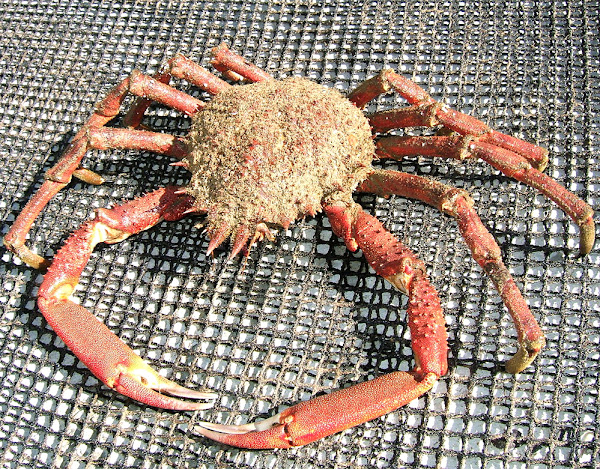
Diet
The Spider crabs are feed on a great variety of organisms, with seaweeds and molluscs dominating in winter, and echinoderms such as sea urchins and sea cucumbers in summer.
Breeding
The female Spider crabs can produce up to 4 broods per year.
Uses
The Spider crab is used as food. It is popular as food in some countries.
Special Notes
The Spider crabs are fished commercially with over 5,000 tonnes caught annually. More than 70 percent of the total catch is from off the coast of France, over 10 percent off the coast of the United Kingdom, around 6 percent from the Channel Islands, 3 percent from each of Ireland and Spain, 2 percent from Croatia and 1 percent from Portugal. And the remaining catches are from Denmark, Morocco and Montenegro.
The Spider crabs are migrators, and their migrations generally take place in autumn with some crabs covering over 160 km in 8 months. They are actually vulnerable to predator when molting, and they become gregarious around that time (presumably for defense against predators). However, review full breed profile of this crab species in the following table.
| Name | Spider Crab |
| Kingdom | Animalia |
| Phylum | Arthropoda |
| Class | Malacostraca |
| Order | Decapoda |
| Family | Majidae |
| Genus | Maja |
| Species | M. squinado |
| Binomial Name | Maja squinado |
| Other Names | Also known as Common Spider crab, European Spider crab, Spiny Spider crab, Maja Squinado, Spinous Spider crab etc. |
| Breed Purpose | Food |
| Special Notes | Economically important, commercially fished with over 5000 tonnes caught annually, migratory crab species, migrations generally take place in autumn with some crabs covering over 160 kg in 8 months, vulnerable to predator when molting, used for food and popular in many countries |
| Breeding Method | Natural |
| Climate Tolerance | Native climate |
| Body Color | Red, brownish-red or yellowish in color |
| Rarity | Common |
| Availability | Europe |

